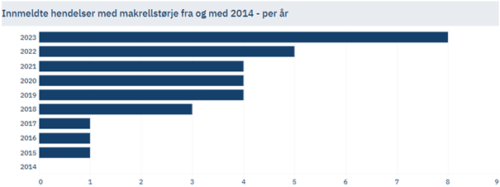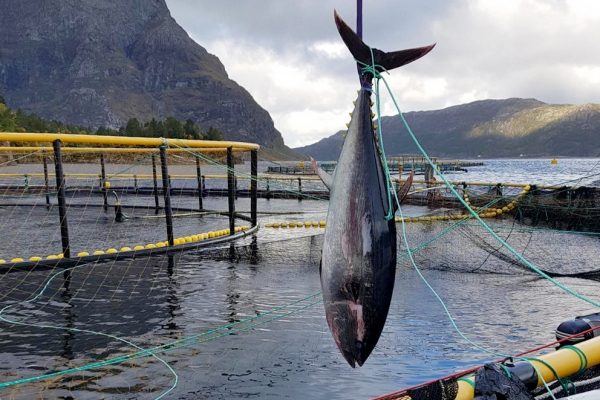An unprecedented number of bluefin tuna have entered salmon farms in Norway this year.
A rise in the population of bluefin tuna along the Norwegian coast is responsible for the record number of incidents according to the Norwegian Directorate of Fisheries.
“In 2023, a good number of bluefin have been observed along the Norwegian coast, and a new record has been set in the number of incidents where tuna have entered aquaculture facilities,” wrote Norwegian Directorate of Fisheries senior adviser Øyvind Grøner Moe in a release on Thursday.

It remains unclear whether the fish are targeting the farmed fish inside the pens or other fish outside, but is believed to be linked to feeding behavior.
Read more: ‘Giant beast’ 350kg tuna breaks into salmon farm
“The reason why the tuna enters the pen is most likely linked to food intake. It is still uncertain whether it is the fish inside the cage or fish on the outside it is looking for,” said the fisheries expert.
This uptick in incidents, often detected during feeding times of the farmed fish, has been associated with changes in behavior and appetite, frequently observed through feed cameras in the pens.
In response to these challenges, the Directorate of Fisheries has developed a guide based on aquaculture operators’ experiences for handling such incidents. The guide, focusing on the management of mackerel tuna in fish farm nets, aims to enhance preparedness and response strategies.
The directorate continues to gather key experiences from previous fish escape incidents to understand the causes and prevent future occurrences.
Bluefin tuna are the largest of the tuna species. The fish can reach a length of more than three meters and a weight of more than 600 kilos. They are extremely fast swimmers with a top speed, according to Wikipedia, of up to 100 kilometres per hour. They are easily capable of torpedoing a farming net.

